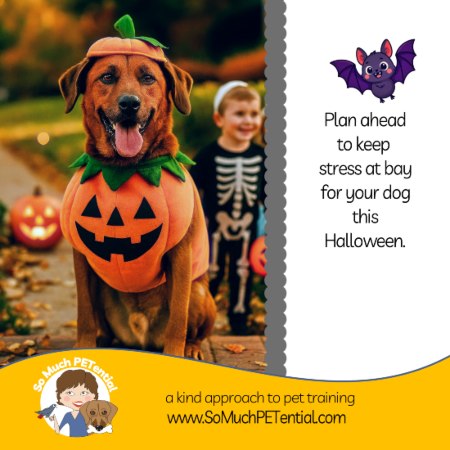Should your child walk your dog on a leash? There is a lot to think about, even for adults. Every dog is different, so I may teach loose leash walking differently depending on the dog…and the handler. And I may break down the behavior in many smaller components. Keep in mind, that maintaining no tension while walking with a rope attached to your body (and the body of a human) while passing things that are scary, exciting or just interesting is NOT a skill most dogs were born with. Before you hand off that leash to your young child to hold, I hope that you will take a few minutes to read this post.
 One of the reasons this topic is fresh on my mind is because of a recent incident at a local park. I was there with a client and her dog, Ginger. Ginger and I came to know each other because of the way she would react in barking, growling and lunging at strangers (especially kids and men), moving things and unknown dogs. The progress I’ve seen with her has just been phenomenal. On recent training excursions, I’ve seen her solicit attention from all kinds of people – kids to adults, men and women, walk through busy areas with loose muscles, and even see dogs from a distance without any barking. (A dog coming too close would still cause her to erupt into barking so we are very careful about space issues when it comes to other dogs.) I love getting text updates showing me family outings, in which Ginger has participated.
One of the reasons this topic is fresh on my mind is because of a recent incident at a local park. I was there with a client and her dog, Ginger. Ginger and I came to know each other because of the way she would react in barking, growling and lunging at strangers (especially kids and men), moving things and unknown dogs. The progress I’ve seen with her has just been phenomenal. On recent training excursions, I’ve seen her solicit attention from all kinds of people – kids to adults, men and women, walk through busy areas with loose muscles, and even see dogs from a distance without any barking. (A dog coming too close would still cause her to erupt into barking so we are very careful about space issues when it comes to other dogs.) I love getting text updates showing me family outings, in which Ginger has participated.
I digressed. So, we were in an active park a few weeks back. Ginger had met many new friends before I saw them from about 100 ft or so away. An older man was walking with two girls younger than 10. One of the girls was holding the leash of a standard poodle, walking at least four feet ahead of her. That is when the dog spotted us and began moving toward us quicker. The leash became taught and I could see the girl being pulled from behind. Her dog was not paying any attention to her. At that point she had no control of the direction of that dog. The older man did nothing to stop it.
I knew the situation could potentially get ugly if that poodle came up to Ginger as it was headed, with possible physical and emotional trauma. Quickly, I moved forward and got in front of the dog, blocking it from getting any closer to Ginger. Meanwhile my client was able to move further away too. I told them we were with a dog that did not like being approached by unknown dogs. The little girl did apologize before they turned and walked a different direction…she was still holding the leash behind her dog with the older man walking behind.
Now let me tell you about another occasion from a couple years ago. I was walking my then young dog down a residential street when I saw a young boy and girl walking up a side street, heading toward our path. Their Labrador retrievers were walking by their sides with loose leashes. The dogs were relaxed. The kids were relaxed. I kept my eyes on them, and was ready to turn the other direction. Then I saw the little boy notice me. Then I saw both handlers ask their respective dog to sit. Their dogs sat. They gave their dogs treats as we got closer. Dawson and I walked past them while the dogs continued to stay sitting. Once we passed, I heard the girl and boy release their dog to keep walking in the other direction.
I bring up these stories to give you thought. Yes, sometimes, with training, young people can walk dogs beautifully with loose leashes but certainly not every child and not every dog. Most children under the age of about 13 should not walk a dog alone.
There are just SO many factors.
It depends on the environment.
It depends on the maturity of the child.
It depends on the child and dog’s relationship.
It depends on the dog’s training.
It depends on the child’s training.
It depends on the physical ability of the child.
It depends on the age of the dog.
It depends on whether the dog has
I could go on…
Still, unexpected things can go wrong and badly. These are just a few ways.
A large dog could see something of interest and begin running toward it, yanking your child down to the ground or breaking free from the little hands to get to that dog, person, wild animal or other moving target. At that point, physical and emotional injury could happen to your dog or other animal or person.
Another dog could approach your dog.
Your dog could get startled by an unexpected sight or sounds and either bolt, not want to budge, try to run home, or redirect a response onto your child or other bystander close by.
If your child is walking your dog on a flexi leash, there are other cautions. Please click here to read my blog post about flexi leash cautions.
So, your child wants to learn how to walk your dog? Here are a few considerations:
Practice teaching your dog to walk on a loose leash fluently before adding your child to the lesson. This includes other behaviors that go into loose leash walking like changing direction, sitting, laying down, turning away from something, or dropping something. Your child can absolutely watch, learn from and help you with those lessons.
Practice teaching your child how dogs communicate. I cover this in my kids’ classes and private lessons.
Practice teaching your child how to teach your dog other behaviors outside of walking on a leash. This not only builds your child’s skills but also teaches your dog to listen to your child, and can strengthen their relationship.
Practice asking your child about the What If’s that can occur on a walk, and how to handle them.
Practice having your child hold a leash attached to one side of your dog’s harness, while you hold another leash attached to a different point. This way you can be a safety net in case anything happens.
Practice with your child walking with your dog in an enclosed, safe space.







